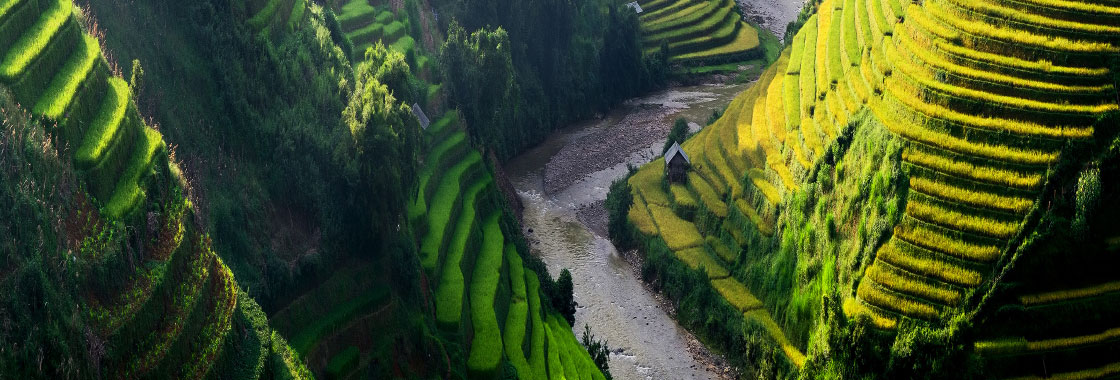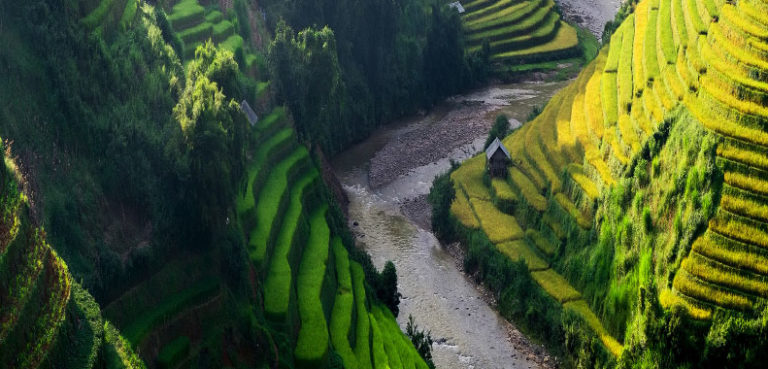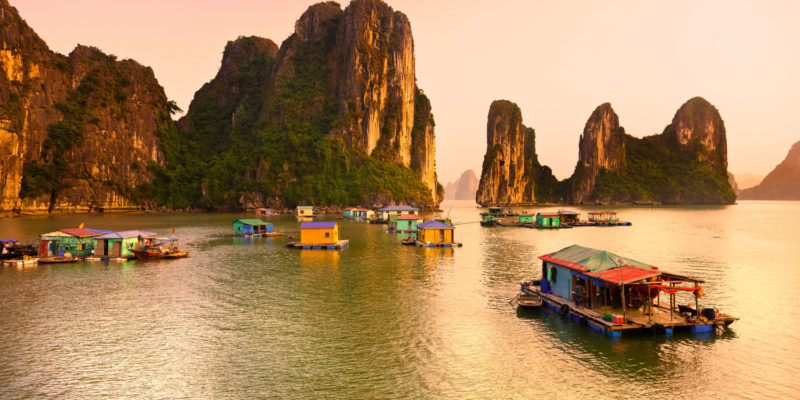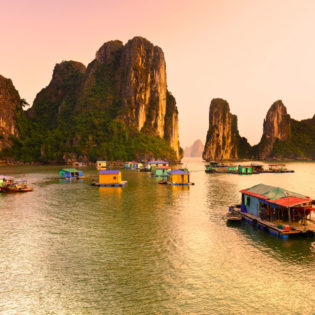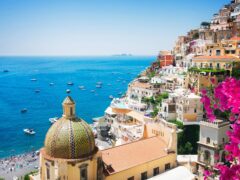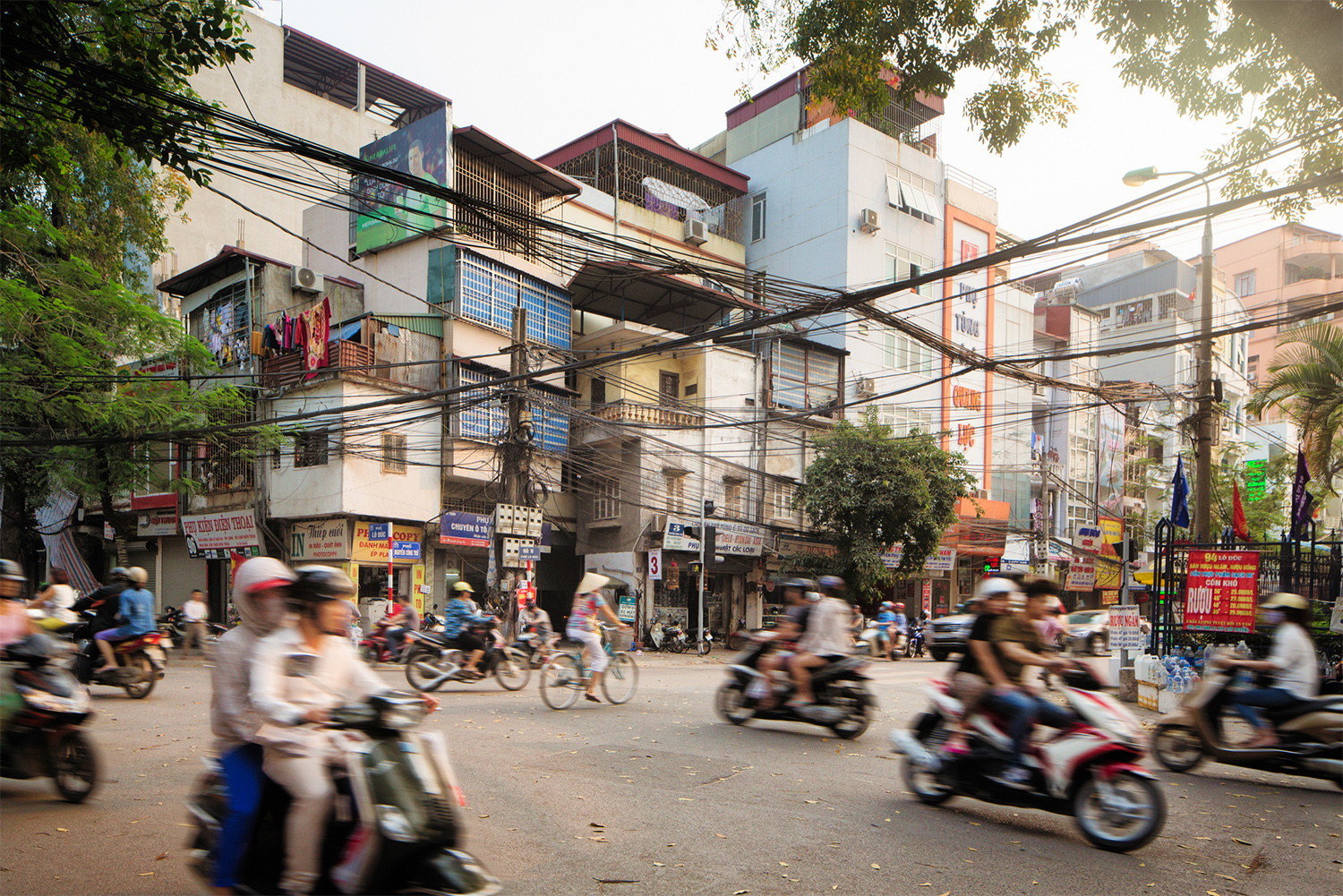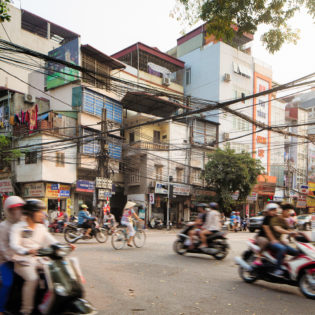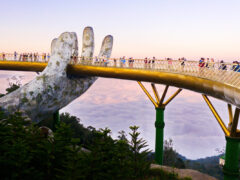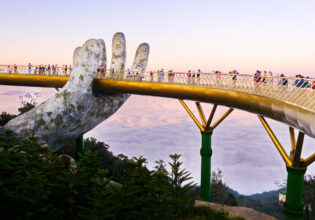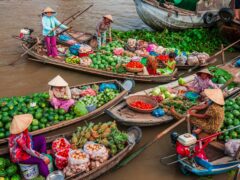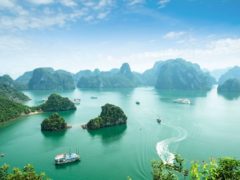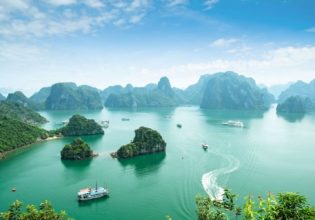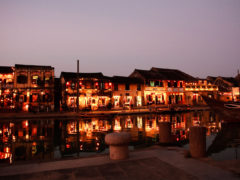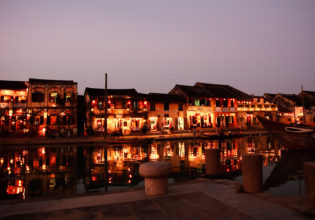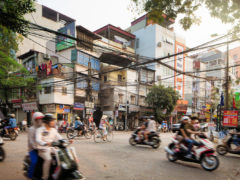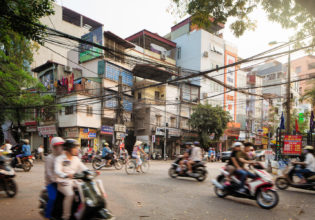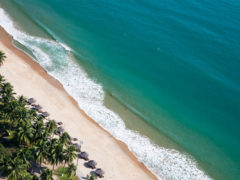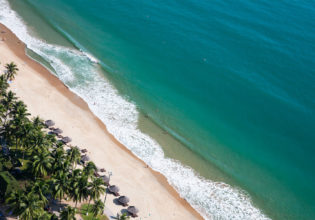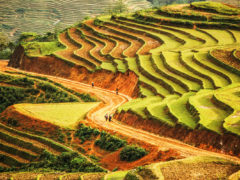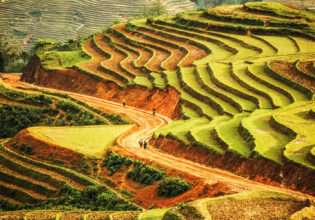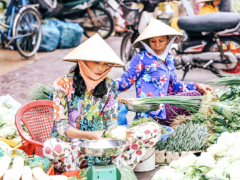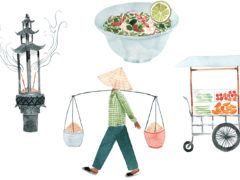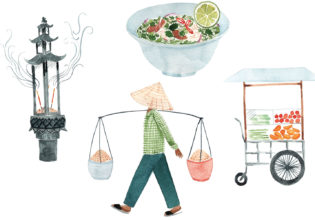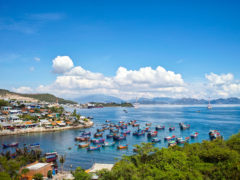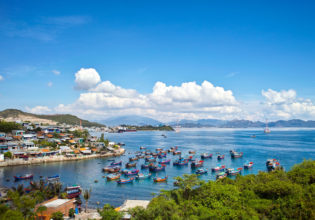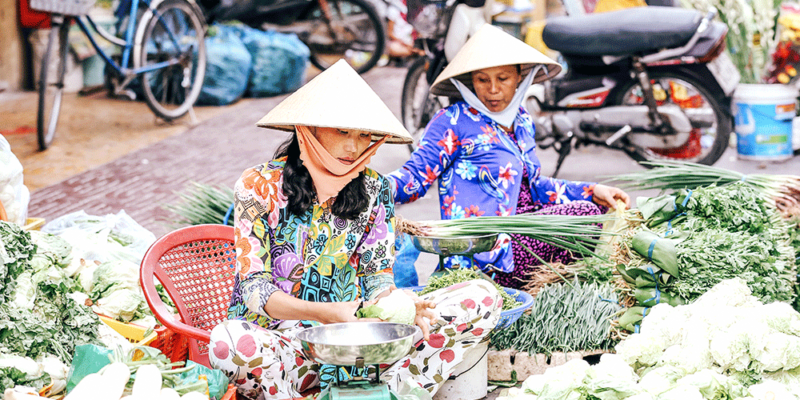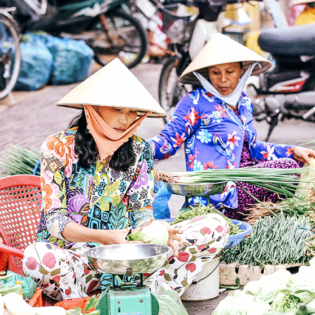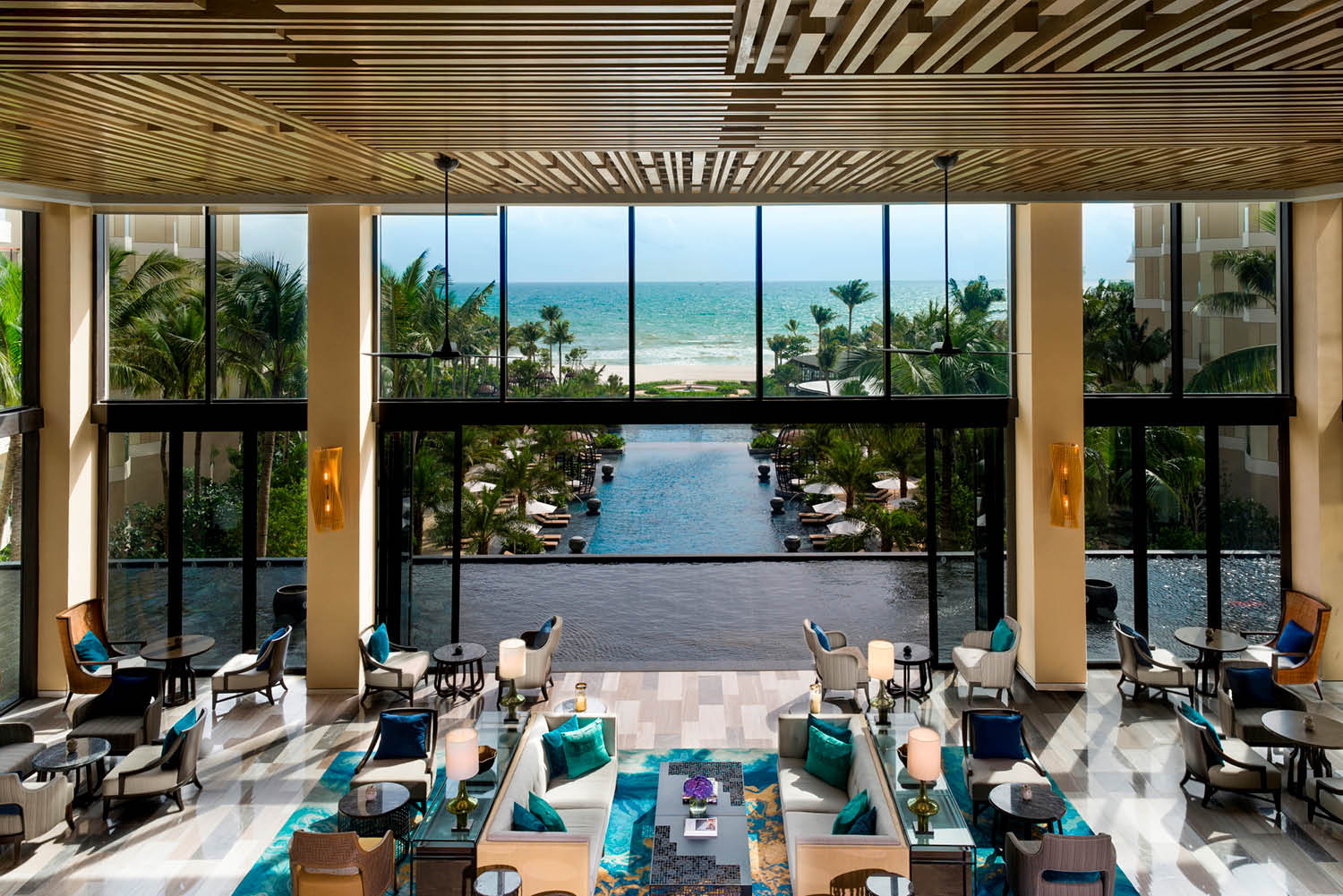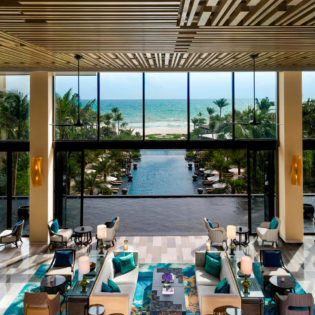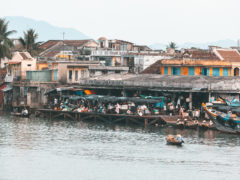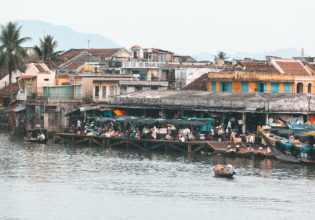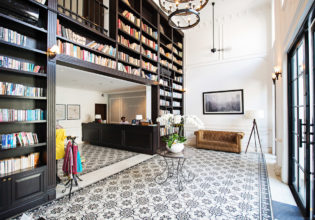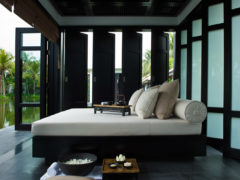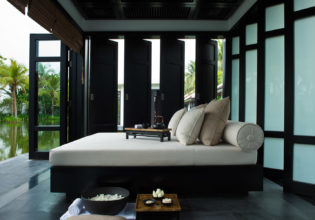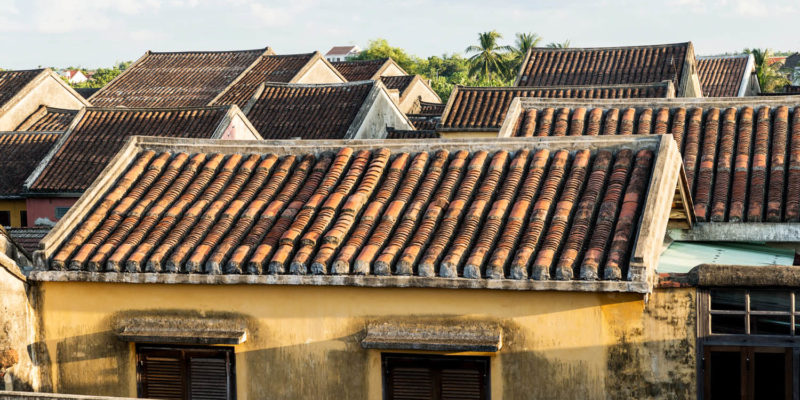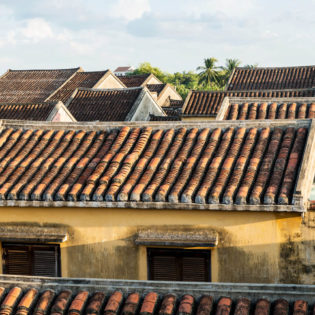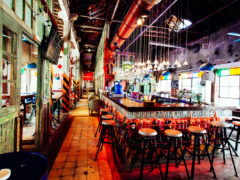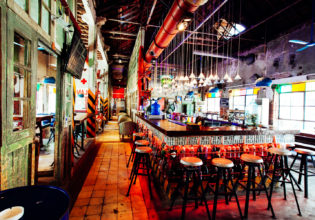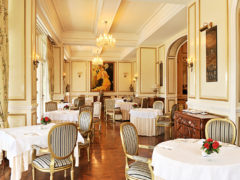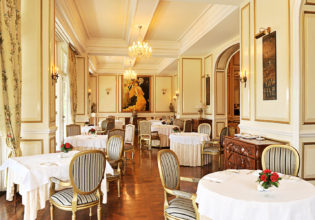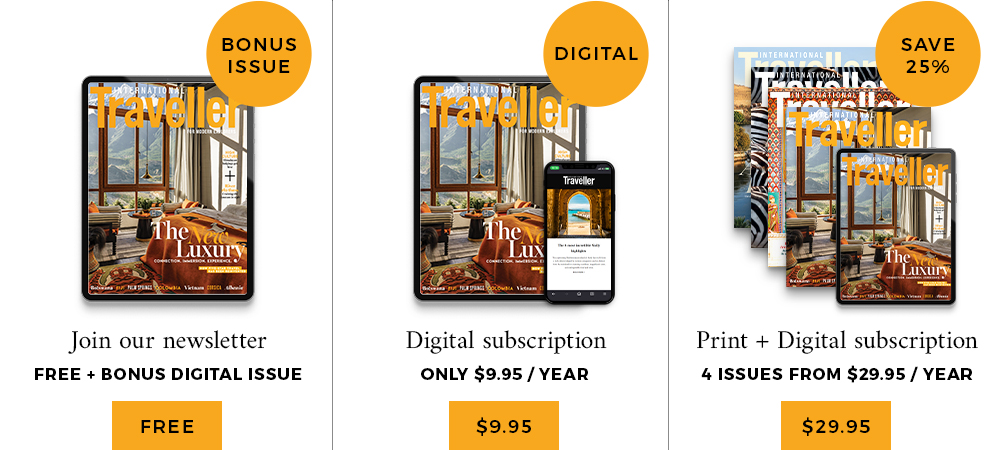Vietnam offers travellers scenic treasures in the form of jungle mountain vistas, heavenly beaches and also modern, constantly changing cities where there is every modern luxury while also paying homage to the traditional culture and design of pre- and post-colonial times. Welcome to our Vietnam travel guide.
For travellers who experience the pull of wanting an all-modern-facilities available experience alongside a rich cultural experience of South East Asia, they will find shrines and temples rubbing shoulders with skyscrapers and resort hotels. From the city to the coastlines, an escape from the busyness of the city sees travellers land on remote rice terraces or on beaches where the sun, sky and golden sand stretch in all directions.
Getting There
Vietnam Airlines offers non-stop flights to Ho Chi Minh city, which take between 8.5 and 12 hours depending on where in Australia you’re flying out from. Other operators may take just over 14 hours, inclusive of stop-overs.
Things to do in Vietnam
Most flights to Vietnam go to Ho Chi Minh City (also known as Saigon). From there, stay and soak up the bustling city life or travel to Hoi An (a quiet city), Phu Quoc Island (south of Vietnam, home to 99 forested mountains), Nha Trang (white sandy beaches for miles), Ha Long Bay (a stunningly beautiful World Heritage Site located near the border with China).
Whether it’s beaches, markets, shopping, hiking or cruises, you can do one or all of these things with some forward planning.
How to Get Around Vietnam
Plane, train, automobile. Your options aren’t limited at all when it comes to getting around Vietnam. Buses, tuk tuks and scooters are all additional options.
Many travellers opt to fly in to Ho Chi Minh from their international destination then travel north to Hanoi, or south via bus, hiking, motorbike or standard road bike then returning via plane. You can fly from Da Nang, Hai Phong, Can Tho, Hue, Nha Trang, Da Lat or Phu Quoc via domestic flights.
Trains are more expensive than buses in Vietnam, though they are more comfortable and a faster way to travel between destinations. The train between Hanoi and Ho Chi Minh City is a popular route, though keep in mind it takes over 30 hours. If you book an overnight trip, you’ll sleep through most of it. Book early, especially in peak season to ensure you get the time and date you need.
Most cities in Vietnam are well serviced by bus routes, although the quality of some of the roads leaves plenty to be desired and you may find the comfort factor gives good reason to opt for taxis, trains or flights. Short bus trips aren’t too taxing, though keep in mind that there may be a lack of English language skills, so studying the routes prior to jumping on the bus is advised.
Your driving licence isn’t recognised in Vietnam so renting cars is not advisable nor easy. You can organise a private driver though, and if travelling in a group this can be an affordable and comfortable option for getting around.
Bicycle tours are aplenty but you can also rent bikes in the major cities and Dalat, Hoi An, Ninh Binh and Hue are renowned for being cycle-friendly.
Alternatively, flag down a motorcycle taxi, motorbike or cyclo. Make sure you settle upon a price before departing though and don’t be afraid to negotiate. It’s expected. The roads can be chaotic so it’s advisable not to rent a motorbike or a car.
Scenic Hikes
From an easy stroll through to serious jungle hikes, Vietnam’s beautiful landscape is entirely designed to be walked, trekked, climbed and ambled.
Northern Vietnam is ideal for mountainous climbs and more sturdy trekking while elsewhere you’ll find nature trails, reserves, national parks and coastline hikes.
Lang Bian Mountain in Dalat offers a variety of adventurous walks and experiences. Rock climbing and camping alongside hiking are the most popular activities.
Ba Be National Park was only established in the early 1990s. Rainforests, waterfalls and sky high limestone mountains all jostle for your attention. There’s plenty of hiking trails to choose from, with multi-day treks enabling you to see waterfalls, caves, rice fields and more.
Cat Ba National Park is located on an island near Ha Long Bay. Go for the 18 kilometre hiking trail up a mountain. It will take approximately 6 hours and it’s advisable to go with a guide. This is a wildlife lover’s idyll, with a good chance you’ll spot civets, macaques and deer.
Cuc Phuong National Park is Vietnam’s oldest and largest national park. It’s renowned for being a conservation area rich with hiking trails that may take you up the karst mountains for unforgettable valley views or less strenuous hikes through the forests and trails. Local guides are available or opt for a self-guided day hike.
Ba Na Hill is ideal for those seeking scenic walks without too much challenge. Hiking trails through this quirky replica of a French Colonial town and miniature railway is fun and will lead to gorgeous waterfalls.
Local Culture
Like many of the South East Asian destinations, Vietnam is friendly, hospitable and welcoming of tourists. Over half the population are Buddhist, though there are 11 recognised religions in Vietnam: Islam, Bahai, Catholic, Protestant, Hoa Hao, Cao Dai amongst them.
In many family homes there are shrines to family ancestors, regardless of religious identity.
Vietnam was colonised for over a thousand years by China and thus, their values, norms and traditions have been influenced by Chinese culture. French culture also plays a strong role, since Vietnam was colonised by the French in the 19th century and there are still many elements of architecture, design and food related to the French influence.
It’s advisable to wear sleeves that cover the shoulders and knee length or longer pants when visiting religious sites. If visiting a family home, acknowledging and greeting the elders is expected and respectful. It is also expected that you will remove your shoes upon entering homes and religious sites. If you’re worried about the security of leaving your shoes, you can carry them in a bag with you. Gifts of fruit, flowers or confectionary when invited to a house are the norm.
Best Places to Go in Vietnam
Sapa
In Vietnam’s north, Sapa is the mountainous home of many hill tribes including the H’mong and Red Dzao. A great spot for scenic walks through rice fields and to immerse yourself in the rural life of Vietnam’s traditional tribes.
Hanoi
The capital of Vietnam, this is tourist terrain but still maintains its cultural heart. Classic French colonial architecture, delicious street food, the Old Quarter alongside wide, graceful boulevards. Hanoi is a wonderful place to go on a walking adventure.
Halong Bay
Cabes, cliffs and jungles are the natural terrain of the over 2000 islands rising from Halong Bay. It’s a popular choice to opt for a cruise on a traditional ‘Junk’ boat through this world heritage registered region. Have your camera at the ready at all times, but also dedicate time to just cruising and absorbing the natural wonders of the bay just east of Hanoi.
Hue
Pre-colonial architecture from the Citadel to the emperors’ tombs offer a rare glimpse into Vietnam’s ancient history. Hue is also the centre of Vietnam’s Buddhist culture with many pagodas and temples to explore.
Hoi An
In central Vietnam, this historic town right on the water is well known for its tailors and chic bars, restaurants and shopping. For those who have dining front of their mind, street carts jostle with French cafes and riverfront restaurants.
Nha Trang
Once a quiet fishing villa, Nha Trang is now most known for its beautiful beaches. The radiantly white sand and deep blue sea provide an ideal view from one of the seaside bars.
Ho Chi Minh (once Saigon)
In Southern Vietnam, Ho Chi Minh City is a modern and cosmopolitan centre where you will still find locals burning incense on the footpaths in honour of their ancestors. Art galleries, bars, restaurants, busy and bright markets and food stalls – there’s every reason to dedicate a few days if not longer to Ho Chi Minh City, which is most likely where you’ll fly into from Australia.
Phu Quoc Island
Tucked away off the coast of Cambodia lies the Vietnamese island of Phú Quốc, a hidden paradise that has managed to fly under the radar until now. The island, famed for its breathtaking sunsets, sugar-white sand and… fish sauce, is set to become a major beach resort destination over the next few years.
A number of international resorts have popped up on the island, with the InterContinental Phu Quoc Long Beach Resort leading the way. Long Beach, Ong Lan Beach and Bai Sao are some of the best beaches to stop and soak up the sun.
Eat out at the Phu Quoc Night Markets, ride a motorbike to the hidden Starfish Beach, ride the world’s longest non-stop, sea-crossing cable car to Pineapple Island and sip a cocktail as you watch the sun set over the ocean at Ink 360 Rooftop Bar.
Best Time To Visit Vietnam
Vietnam is over 1,000 km in length with a diverse landscape between the regions, so if you intend on traversing the whole country, it is a little more complex than if you are containing your trip to a certain area. That said, the best overall times to visit are February to April and August to October when the temperatures are pleasant and there’s less rainfall. March and April see the driest conditions though it is still cool in the far north.
Where to Stay in Vietnam
A traveller’s destination, Vietnam has long been a favourite of first-time travellers and backpackers due to the immensely affordable accommodation, travel, food and the ease with which you can traverse north to south. Whether you’re seeking hostels, budget hotels, private house stays, luxury accommodation or beachside resorts, there’s options for every budget and preference.
Luxury Resorts & Villas
Centara Sandy Beach Resort in Danang offers pool, palm-tree studded beachfront and spacious rooms.
The Hyatt Regency Danang Resort & Spa offers glorious pools, views and the impeccable service and quality of rooms and facilities that Hyatt has become world-renowned for.
If your budget stretches a little further, opt for Mia Resort Nha Trang with idyllic, picturesque gardens, private beach and five star service.
Six Senses Ninh Van Bay offers divine sea views, spa services, yoga and private pools.
Hotels
Hotels range from $16 through to over $300 per night and every location has options at each price point. Hanoi Laselva Hotel offers a restaurant and bar alongside suites and rooms. Lantana Riverside Hoi An Bed and Breakfast has a free beach shuttle, pool and riverside views.
Foodie Experiences in Vietnam
Australians have become well acquainted with the noodles in peppery broth, Pho. Don’t miss it in its original home. Also add Banh Mi, Bun Cha, Hai San (seafood), Banh Xeo and Mi Quang to your must-eat list.
Whether you crave fine dining or street food, or both, Vietnam has sweet and savoury options galore. Menus are typically in Vietnamese, which can be troubling for those with allergies or restricted diets. A guidebook and some research before you arrive will ameliorate most concerns.
In Ho Chi Minh City, Pho is typically richer and arrives with a range of condiments from hot to sweet along with fresh, vibrant herbs. The most popular are Pho Ga (chicken) and Pho Bo (beef) though you’ll also find tofu and shrimp options, and all are a common breakfast meal.
Banh Mi is a delicious sandwich snack. Inspired by the French colonial history, Banh Mi is a baguette filled with meat, pate, cucumbers and other savoury ingredients, herbs and condiments.
Barack Obama joined Anthony Bourdain on screen to share a meal of Bun Cha for a foodie travel show a few years ago, so it isn’t without fame or infamy. Bun Cha combines rice noodles, ground and whole pork slathered in a savoury fish sauce, sugar and vinegar along with added lettuce, coriander, bean sprouts and banana blossoms on the side.
Tho Bun Bo Hue (beef noodle soup) hails from Hue, it is available throughout Vietnam. Lemongrass, shrimp paste and lime juice give a spicy, distinctive flavour to this staple meal.
With its lengthy coastline, seafood lovers have a cornucopia of choice. Crab, squid, shrimp, oysters, sea snails and a variety of fish show up on menus country-wide. The beverage of choice for most locals is cold, local beer.
Festivals in Vietnam
The most recognised festivals in Vietnam are New Year (Tet), Hue Arts Festival, Hoi An Lantern Festival, Ghost Festival (Trung Nguyen), Dalat Flower Festival, Perfume Pagoda Festival and Mid-Autumn Festival.
Tet is a combination of New Year, Thanksgiving and Christmas which honours family ancestors. Evening celebrations often include fireworks, performances and street food stalls.
Hue Arts Festival (only taking place every two years) involves dance, theatrical and music performances alongside boat races and kite flying.
Hoi An Lantern Festival is beautiful and unmissable if you’re able to get to this destination at the right time during your visit. Lanterns are lit and sent down the river where crowds collect on the banks to watch them twinkle.
Inside Asia Tours runs tours throughout the year and can design your travel around the festivals you most want to attend.
